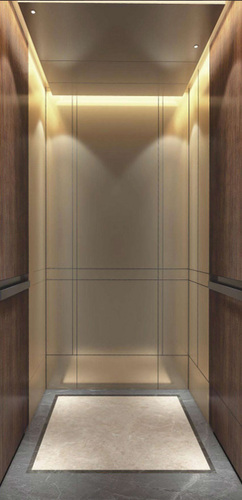The working principle of strong drive traction villa elevator
Posted By Web star
Body
The strong drive operation principle of the forced drive traction villa elevator is to use a hoist fixed at one end of the hoistway to hoist the car, which is called a forced drive elevator in professional terms. Forced drive is still used on hoisting machines in major construction sites. Due to obvious shortcomings, it is generally not used for elevators in normal buildings.
The forced traction elevator has a simple structure, a high utilization rate of the hoistway, and can save space. The forced-driving villa elevator has only two suspension steel wire ropes and no counterweight. The hoist is placed at one end of the hoistway, so its hoistway utilization rate is high.
But the disadvantages of forced traction are also obvious.
- The safety factor is low and it is not very safe. In fact, it can be seen from the driving mode that this type of elevator is extremely unsafe. It is necessary to check the wear condition of the wire rope and the hoist regularly. Because of this structure, the elevator suspension is hung on the car chassis by two steel wires, one on the left and one on the left and right. If one of the steel wires breaks, the entire car will immediately tilt to one side and lean on the elevator guide rails. All the weight of the car will fall on the other wire rope. If the hoist continues to run, it will cause the other wire rope to become tighter and tighter. In the end, either the motor will burn out or the other wire rope will be pulled. If the safety gear fails, the car will free fall to the foundation pit, causing casualties.
- The power consumption is large. The so-called forced drive means forcibly hoisting the elevator car. Without any borrowing components in the middle, the power consumption is inevitably high. Generally, the energy consumption of the same load is 3-4 higher than that of a normal traction elevator. Because there is no counterweight and relying on forced driving, its lifting capacity is not as good as traction under the same power. On the contrary, under the same lifting capacity, the power consumption is definitely greater than that of traction.
- The noise is large, because the hoist of the elevator with this structure must be installed close to the elevator shaft, and the hoist has a gear box, so the current sound of the motor and the noise of the gear box are relatively loud during operation.
- The lifting height is limited, because it is the principle of the hoist. When the elevator goes up, the two steel wires are wound on the drum to lift the car. Therefore, the higher the lifting height, the more steel wires are rolled, and the length of the drum. It needs to be longer, but in the case of limited hoistway size, there is no way to install such a long reel.
- The wire rope and the rope groove of the drum are easy to wear. The wire rope of the hoist extends from the drum, hangs on the wheels on the top of the hoistway, and then stretches down to lift the car. The position of the wire from the wheel to the car is vertical. And it is fixed, but the wire position book from the drum to the wheel on the top of the hoistway moves left and right with the up and down movement of the car, so that the wire rope and the rope groove on the drum are running obliquely and frictionally. Long, either the steel wire is worn out, or the rope groove is worn out, whether it is the wire rope worn out or the drum rope groove is worn out will pose a safety hazard to the elevator.
- The elevator wire is stretched too much, because the elevator has only two wire ropes for suspension, the wire rope itself has a certain degree of flexibility, if the weight in the car of elevator lift factory reaches more than 100 kg, the wire rope will be stretched and the car will sink Below the sill level, uneven layers may even occur.














Comments